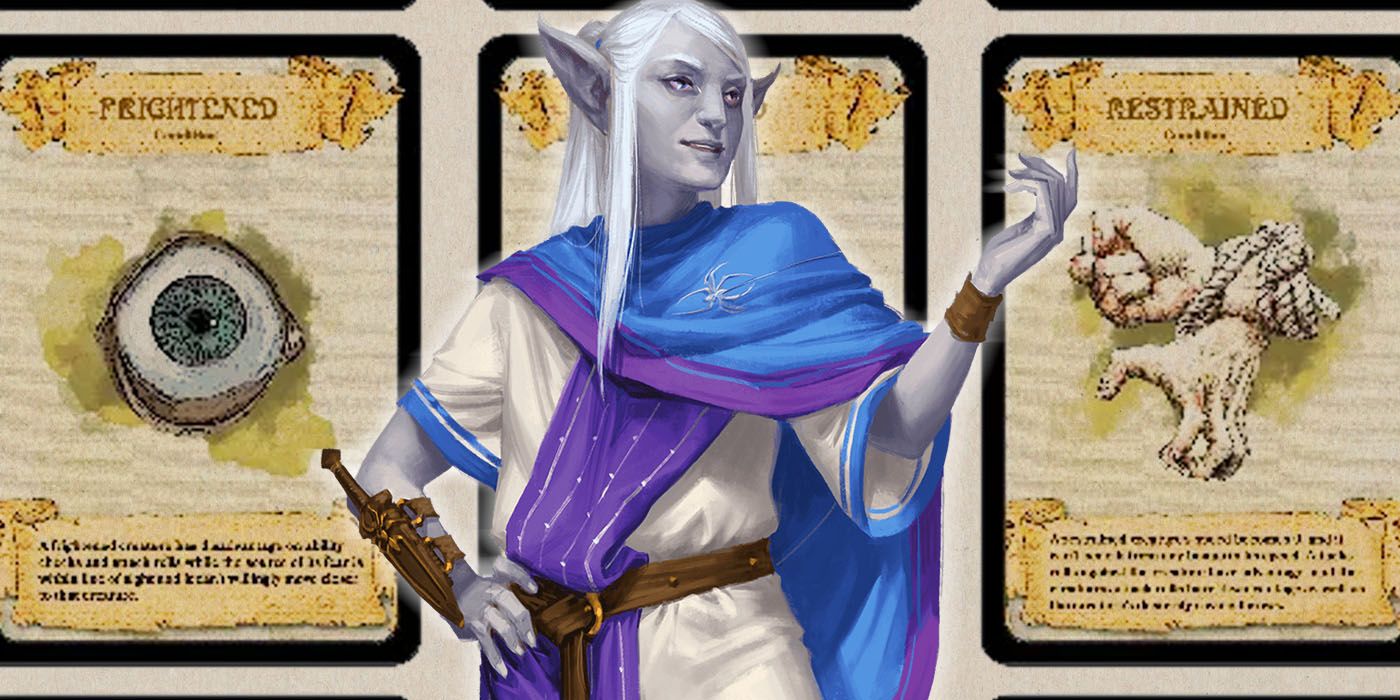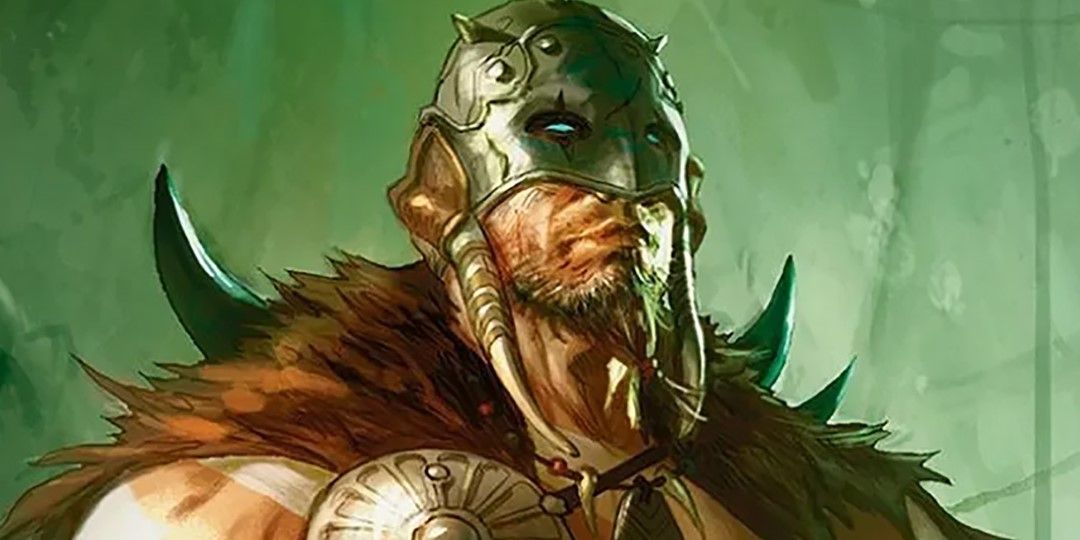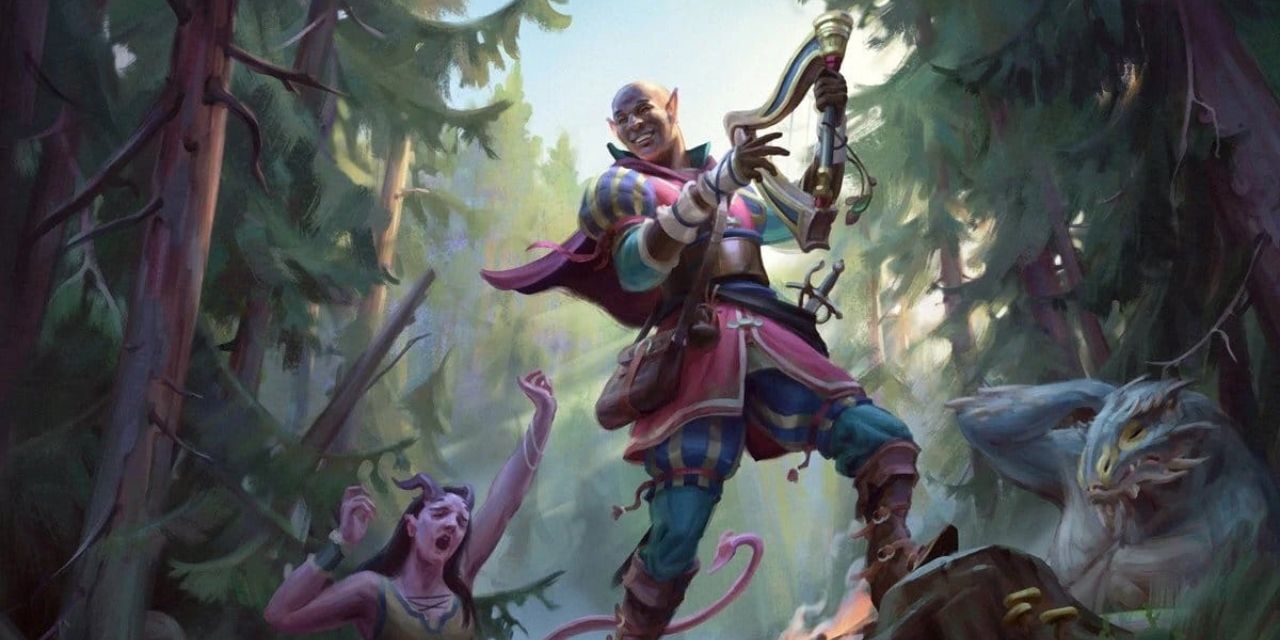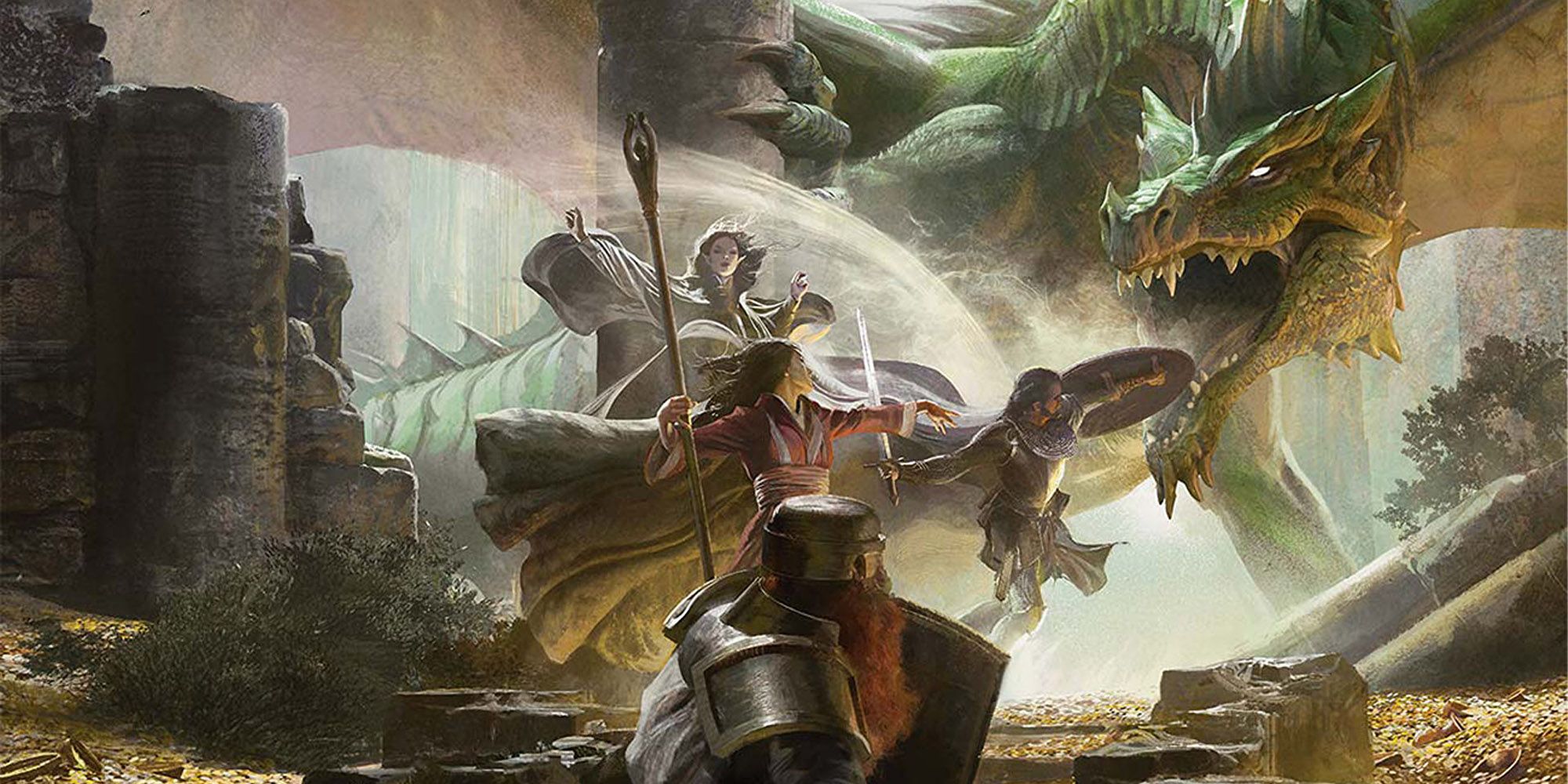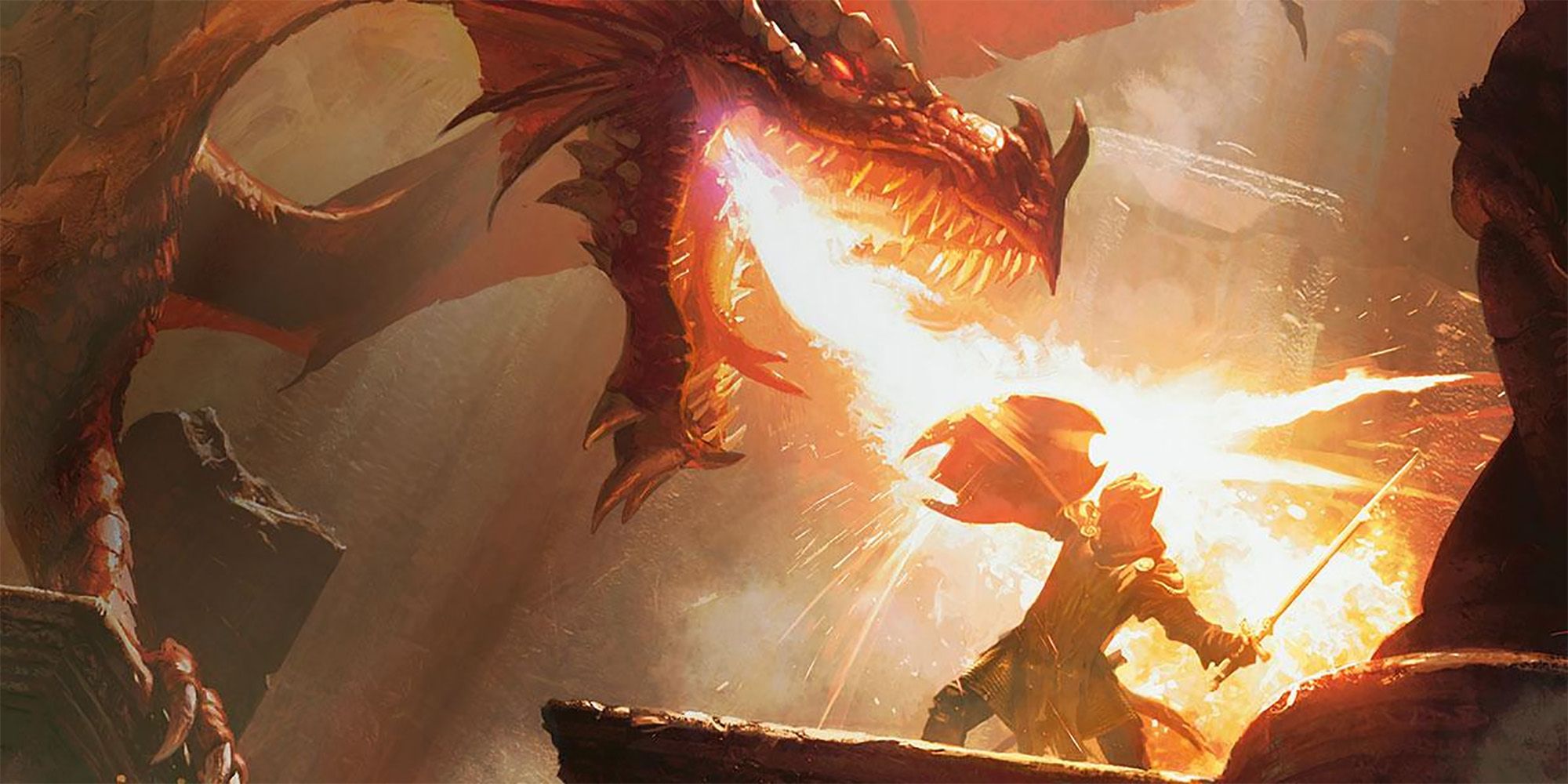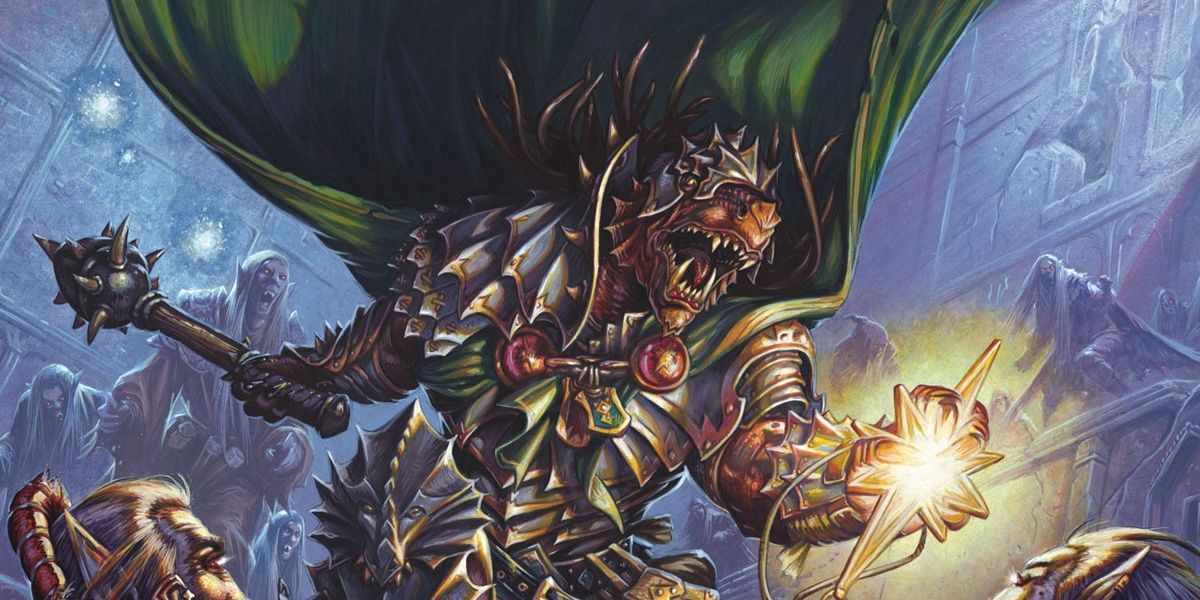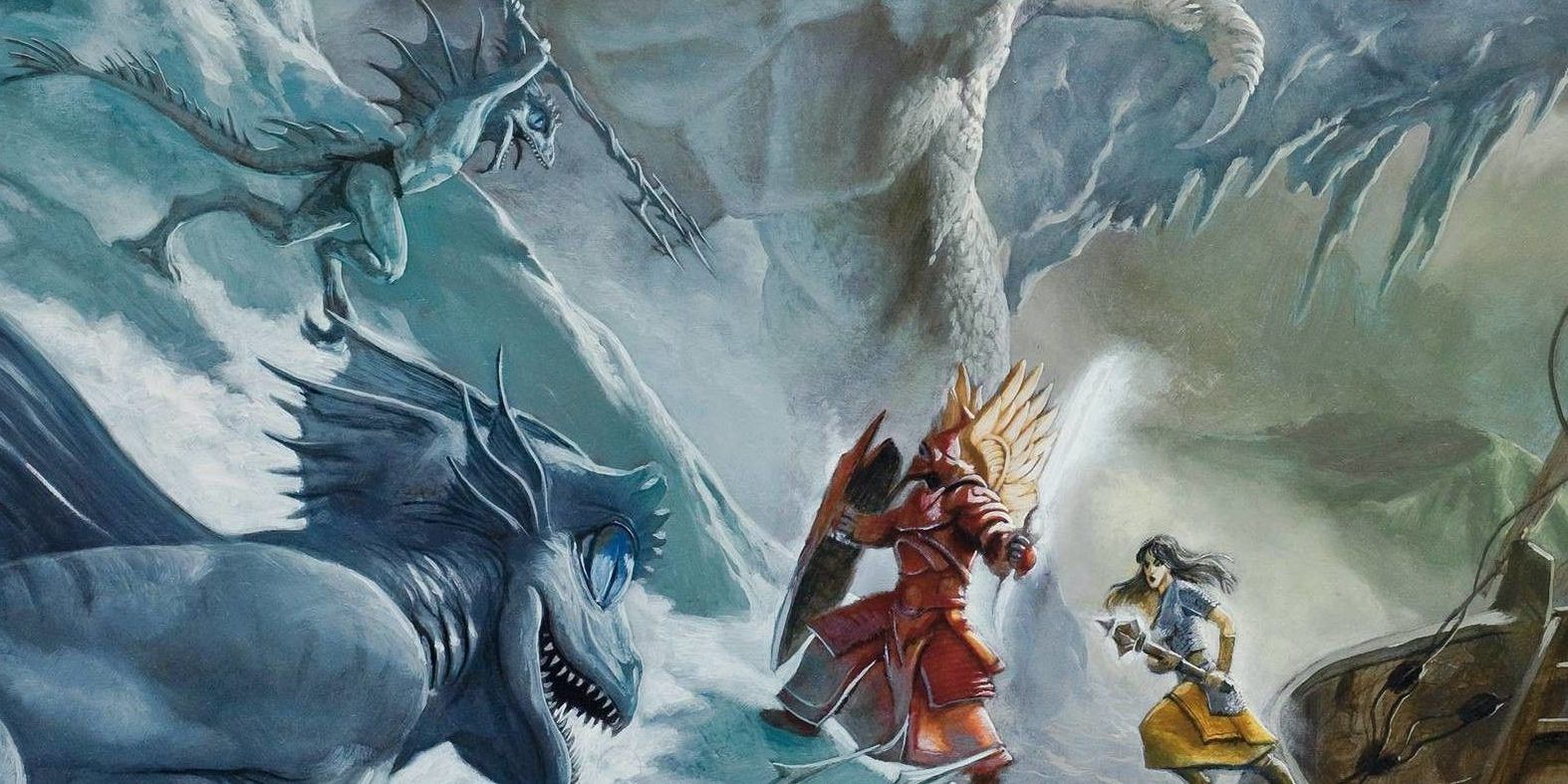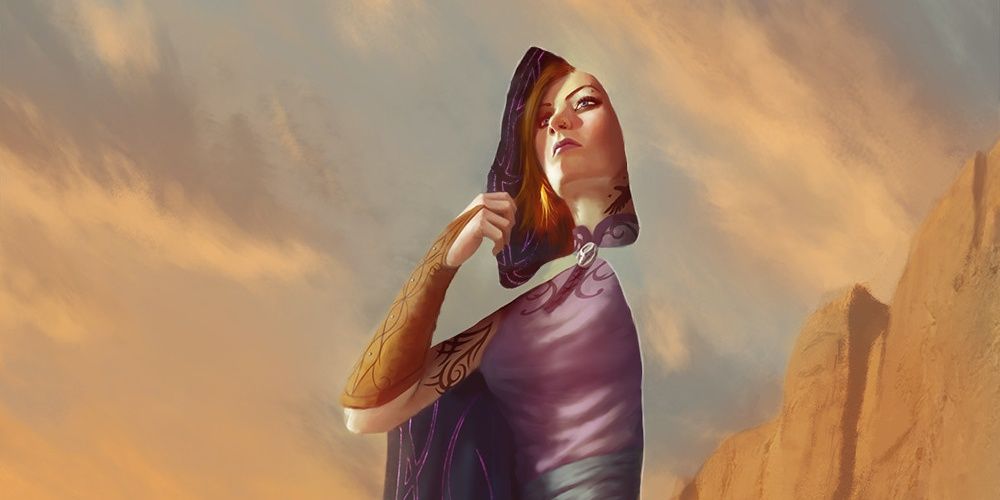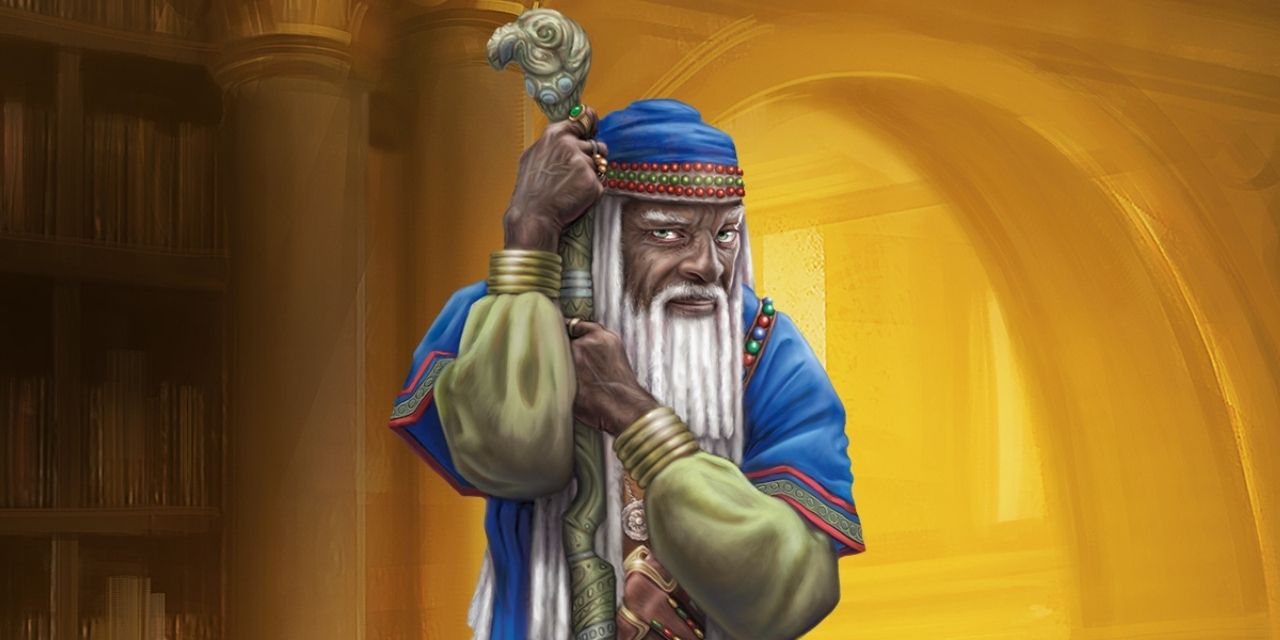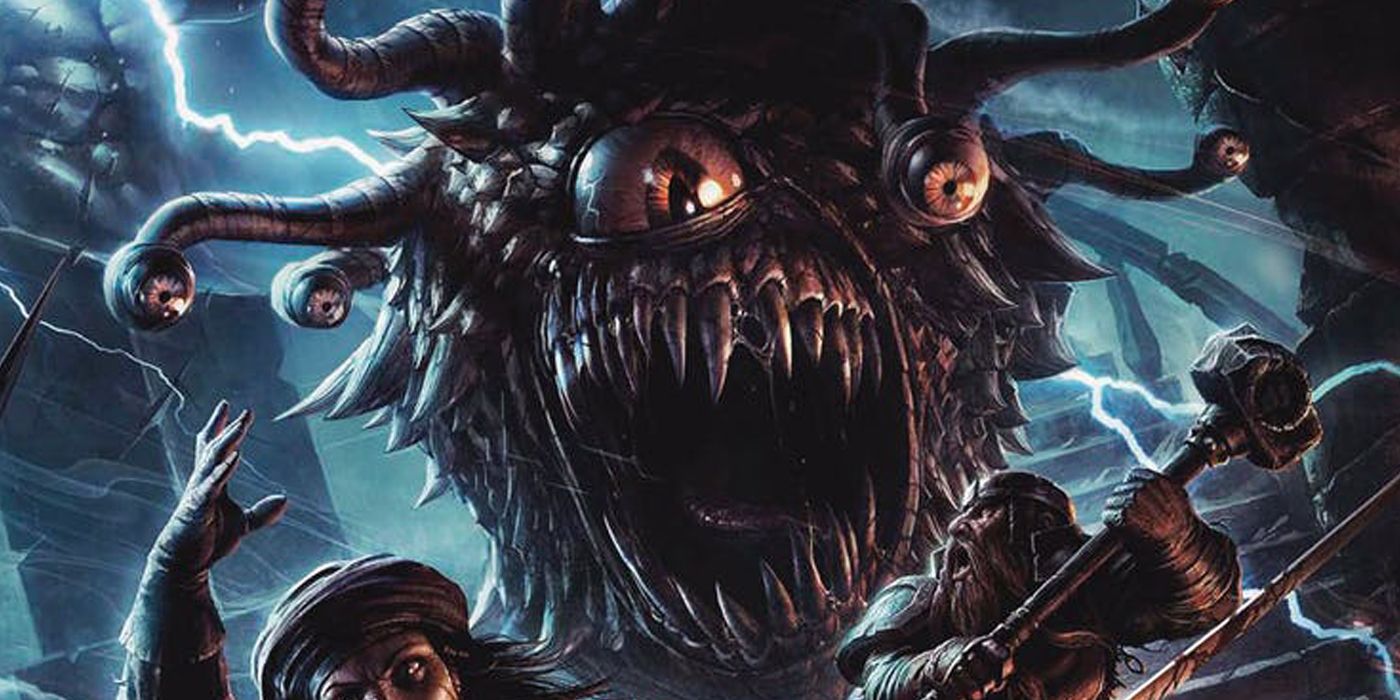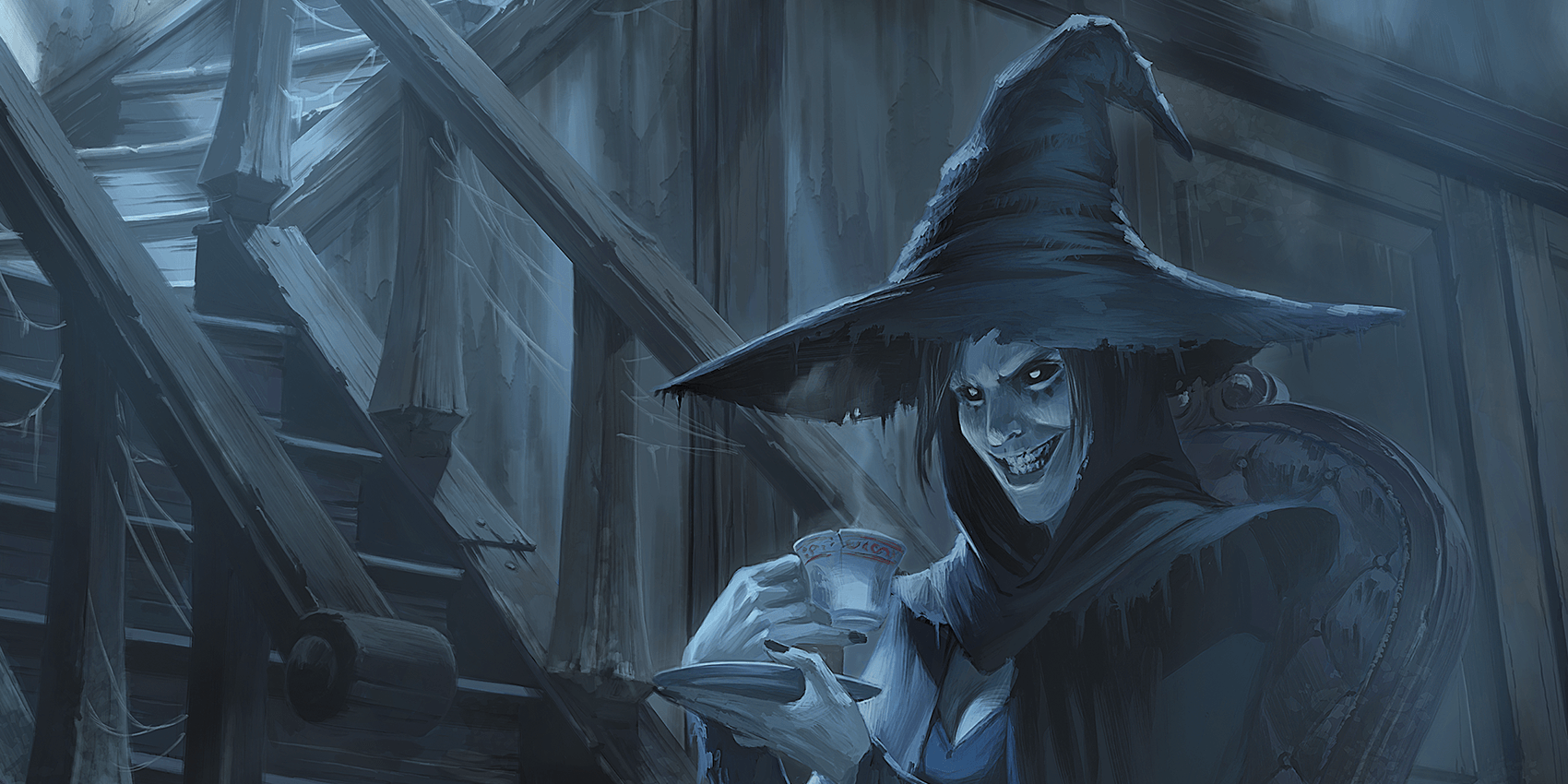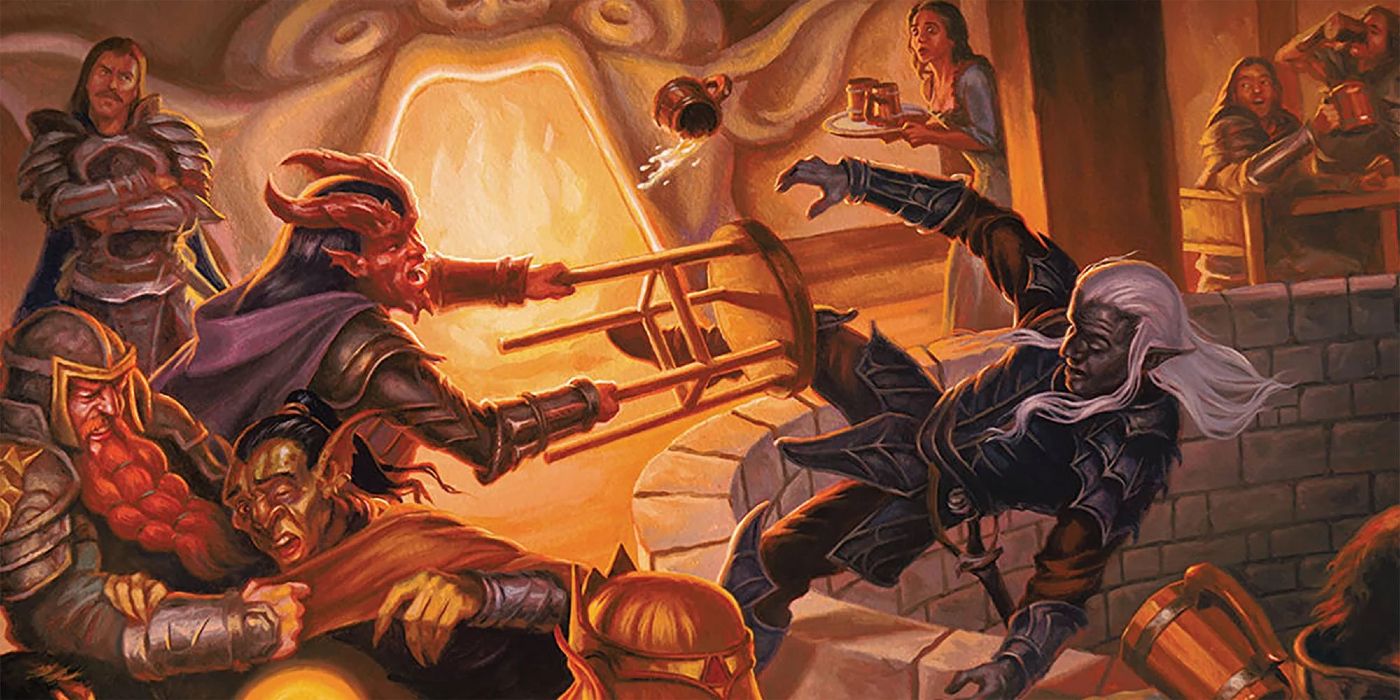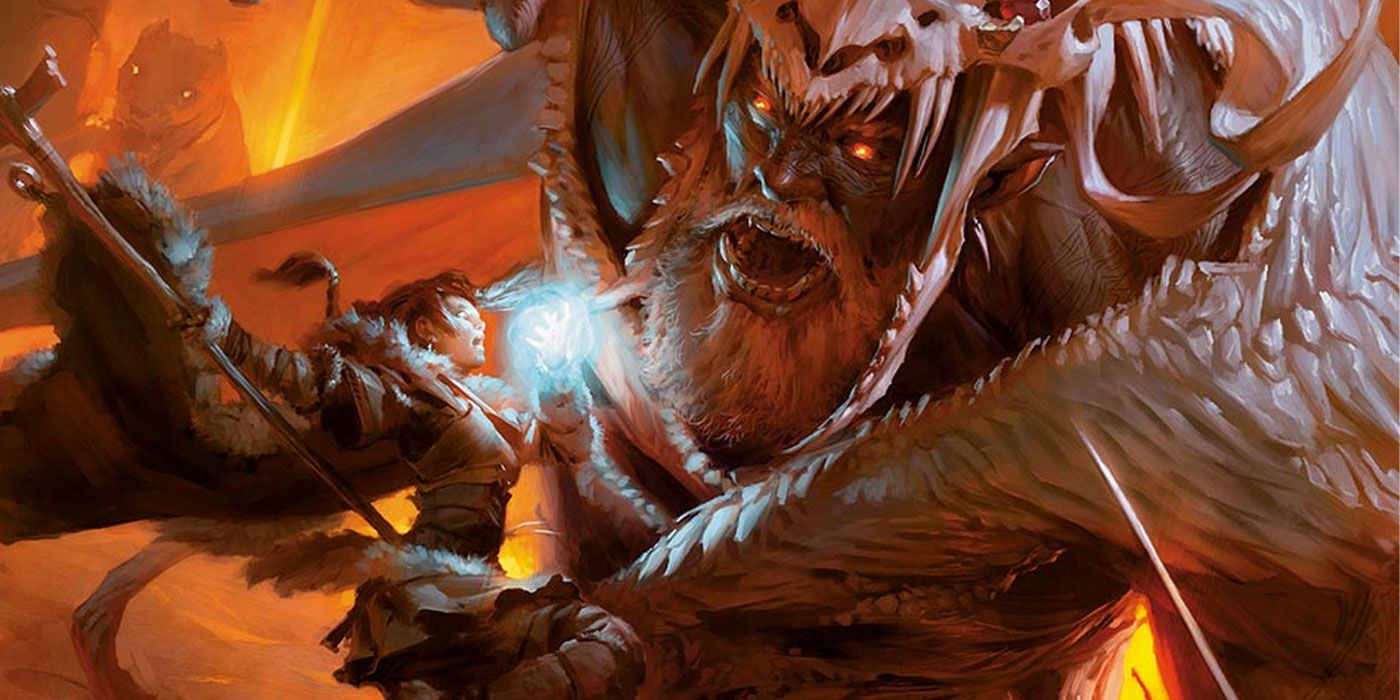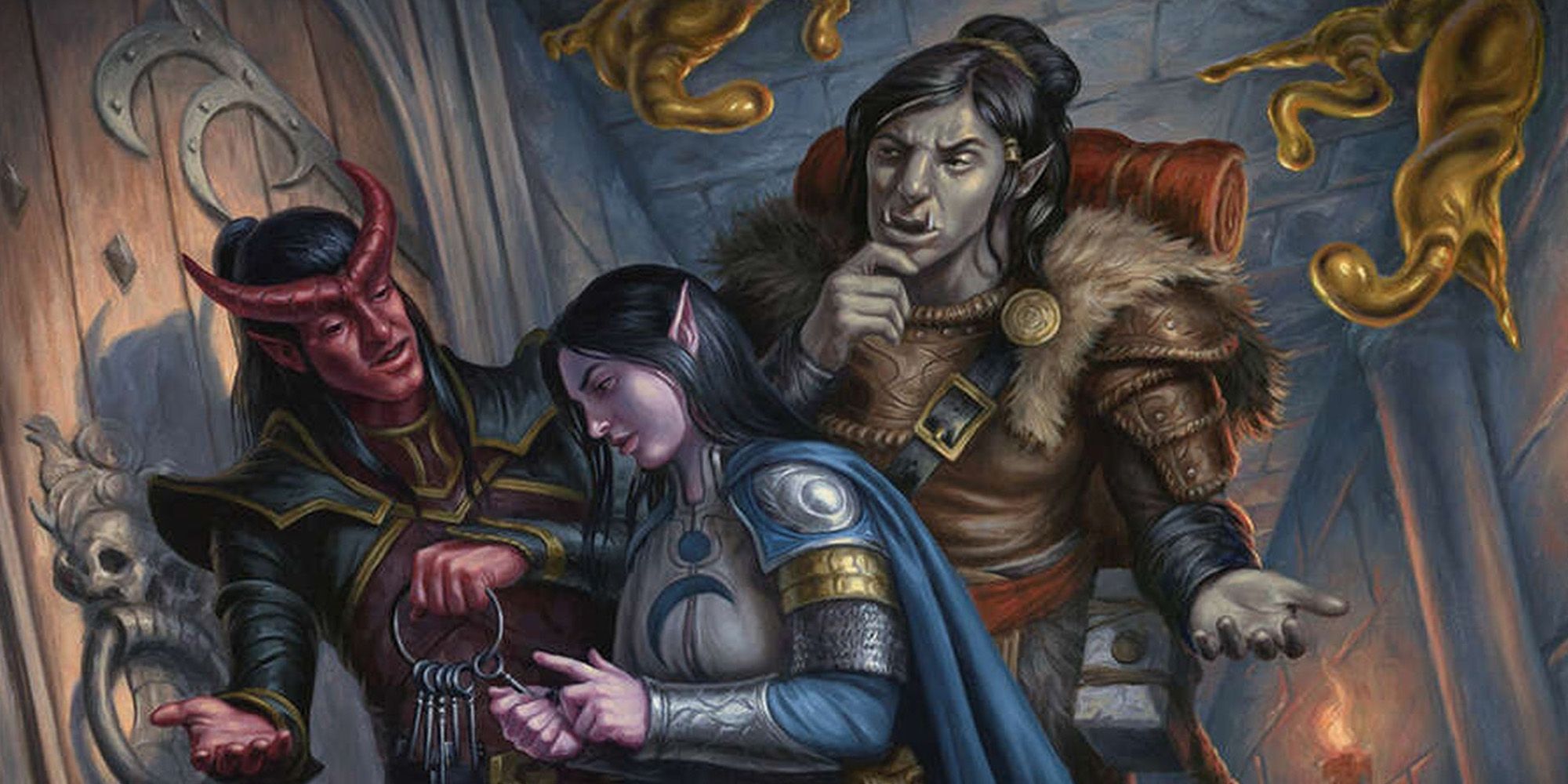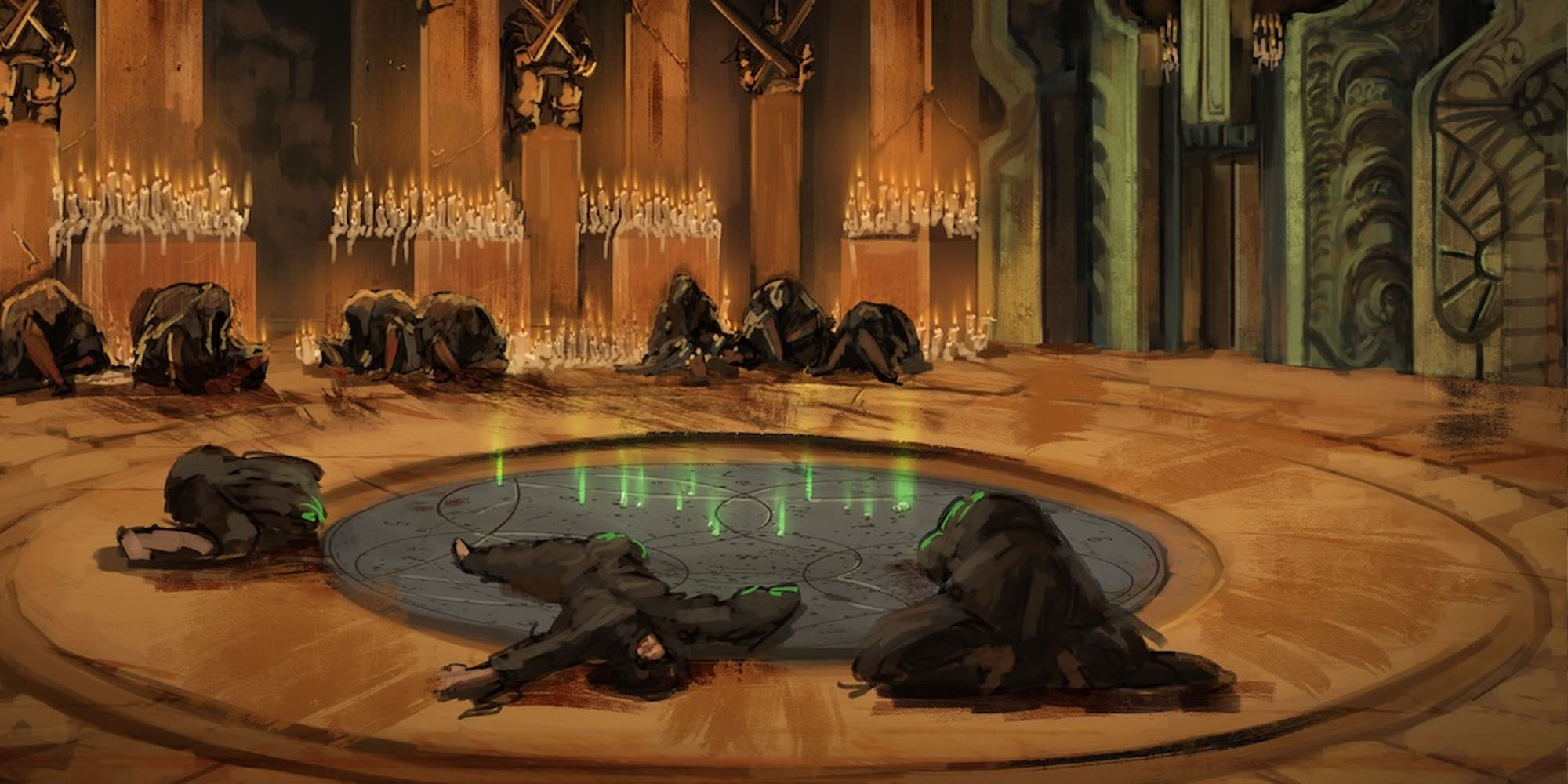Conditions in Dungeons & Dragons are effects which alter a creatures capabilities in some way. They can vary from slight annoyances to debilitating effects, most of which can be inflicted through actions and spells to get ahead during combat and to creatively change-up a situation. While they are great at giving players and NPCs an advantage, they can be just as deadly when used against the party.
Despite their effectiveness, conditions can usually be removed via spells, potions, saving throws and more. Dungeons & Dragons Fifth Edition has 15 different conditions, all of which are important for players and Dungeon Masters to understand if they want to use them effectively or avoid being thwarted by them.
Blinded
As the name suggests, a blinded creature is unable to see, meaning they cannot pass any ability check that requires sight. On top of that, the blinded creature has disadvantage on attack rolls, and anything attacking the blinded creature has advantage. While blindness can be caused by some spells, a more common example is when a species without darkvision enters a pitch-black area without light, which is why it's important to always being a torch along.
Charmed
Charmed usually benefits the one who cast the spell, as a charmed target can't attack or target the charmer in any way. Plus, the charmer has advantage on social ability checks with the creature. This condition will usually last until the spell runs out, however it can be removed with the fifth level Greater Restoration spell.
Deafened
A creature who is deafened cannot hear any sound and will immediately fail any ability checks that require hearing. Usually, this condition will have a set duration from whatever spell or object caused it, or the creature will have to pass a Constitution saving throw to remove the effect.
Exhaustion
Exhaustion is slightly more complicated than other conditions, as it has levels of severity. There are six levels of exhaustion, with points being gained through abilities and environmental hazards. For example, going too long without eating and being out in cold weather without proper clothing will gain the creature a point of exhaustion.
Level one gives disadvantage to ability checks. Two halves the creatures speed. Three gives disadvantage to attack rolls and saving throws. Four halves the creatures maximum hit points. Five reduces speed to zero. Finally, the sixth and final level causes death. Levels are reduced as the player counters the hazard, such as eating when starved or warming up by a fire after being out in the cold.
Frightened
Being inflicted by the frightened condition means the creature is terrified by whatever caused it. Frightened gives the creature disadvantage on ability checks and attack rolls while the cause of fear is in their line of sight. Also, the creature cannot move closer to the source of its fear by choice. Depending on the specifics of the spell causing it, a frightened creature will usually have to succeed a constitution saving throw at the end of their turn to remove the effect.
Grappled
Grappling is an action used to try and hold a creature in place with an Athletics check against them. The creature can be no more than one size larger than the one grappling it. Upon success, the grappler's movement speed is halved, unless the creature is two or more sizes smaller. When a creature is grappled, their movement speed becomes zero, and they can't benefit from any speed bonuses. However there are a couple ways for the condition to end. One is if the grappling creature becomes incapacitated, and the other is if it is moved out of range of the creature it's grappling.
Incapacitated
One less common (but most dangerous) conditions, incapacitation is usually caused by a spell or enchanted item. A creature who is incapacitated cannot take any actions, reactions or movement until the spell duration ends or it is removed by another creature.
Invisible
The more advantageous conditions for the creature who has it, invisibility is usually caused by a powerful potion or spell. An invisible creature can't be seen without the aid of magic or a specific feat that allows them to detect others without sight. Attack rolls against an invisible creature have disadvantage, while the creature itself has advantage on attacks. However, invisible creatures can be heard and leave tracks, and the condition only lasts as long as the spell holds.
Paralyzed
The paralyzed condition is one of the most deadly, as the target can't take any actions or reactions, and they are unable to move or speak. The paralyzed creature fails all Strength and Dexterity saving throws, and attacks against them have advantage. Making things even more perilous for them, any attack coming from within five feet of the creature is an automatic critical hit. Some spells, such as Lesser Restoration, are able to break the paralysis.
Petrified
Petrified is perhaps the most unique condition, as it provides both powerful advantages and disadvantages. A petrified creature is transformed into a solid inanimate object that is unable to do anything. They are unaware of their surroundings and essentially become an object. Attack rolls against the creature have advantage, and they fail all Strength and Dexterity checks. However, a huge positive is that the creature has resistance to all damage and is immune to any poison or disease that isn't already in them.
Usually, the target will be petrified until the spell is over or the caster loses concentration, though spells like Greater Restoration can remove it.
Poisoned
The poisoned condition is fairly common trait among early level spells and potions. While D&D has different poisons that cause different effects, the condition itself gives the creature has disadvantage on all attack rolls and ability checks. This can usually be removed by drinking an antidote or from a healing spell. Some class features, like the Monk's Purity of Body give a character immunity to poison.
Prone
When a creature is prone, they can only move at crawling movement speed and have disadvantage on attack rolls. An attacker has advantage on their roll if they are within five feet, otherwise the attack has disadvantage. This condition can end simply by taking a full action to stand up, assuming that's an option in the situation.
Restrained
While it shares some similarities to the grappled condition, a restrained creature is either being held in place by a greater force or has its movement totally restricted in some other way. A restrained creature's movement speed is zero, and they can't benefit from any speed bonuses. On top of that, attack rolls against the restrained creature have advantage, and their attack rolls are made at a disadvantage, as are any Dexterity saving throws they have to make. Removing the restrained condition will usually mean succeeding a saving throw or destroying whatever is restraining the creature.
Stunned
A stunned target can't take any actions or reactions, plus they are unable to move and can barely speak. Strength and Dexterity saving throws are automatically failed, and attack rolls against the stunned creature have advantage. Other than succeeding a saving throw, the condition can be removed using spells such as Power Word Heal.
Unconscious
An unconscious creature is unable to do anything and falls prone, dropping anything they are holding at the time. This condition most commonly arises when a player or other character reaches zero hit points with a non-lethal attack. While unconscious, the creature fails all Strength or Dexterity saving throws, and attacks against them have advantage and are critical if within five feet. The creature can regain consciousness through healing spells and potions.

